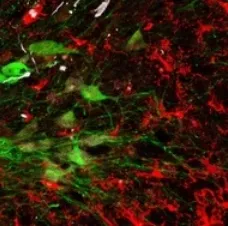Research
My major research achievements have been in the field of cell transplantation and brain repair. I started this line of research in the mid 1970ies, based on the idea that immature neurons can be used to replace lost neurons, restore brain circuitry, and promote functional recovery in animal models of neurodegenerative diseases. During this period, 1975-1985, my group pioneered this approach using cells obtained from the fetal brain. In 1986 our team in Lund obtained permission to use tissue from aborted human fetuses in a series of open-label clinical trials in patients with Parkinson´s disease (PD). These trials, led by my close colleague and former student Olle Lindvall, have given proof-of-principle that immature dopamine neurons can survive and mature in the striatum in advanced PD patients, and restore dopamine neurotransmission in the area of the striatum re-innervated by the grafted neurons. Although the outcome has been highly variable, the results in some of the grafted patients have been sufficiently impressive to encourage further development of this approach. Our current efforts are focused on the development of stem cell-derived dopamine neurons, aimed at the development of transplantable neurons derived from human ES cells for clinical application.
In parallel, I have taken a major interest in the development of strategies for neuroprotection and repair in the damaged brain. In the 1970ies my lab pioneered the study of NGF as a survival factor for cholinergic forebrain neurons in the lesioned and aged brain. In the 1990ies my interest switched to the newly discovered GDNF. Over the subsequent years we have characterised the neuroprotective and regenerative effects in detail, and explored the use of the recombinant AAV and lentiviral vectors for neurotrophic factor delivery to the brain with the aim to develop these tools for neuroprotective and restorative therapy in patients with Parkinson´s disease and other neurodegenerative disorders.
Over the last decade my group has pioneered the use of AAV vectors for overexpression of human a-synuclein for induction of Parkinson-like neurodegeneration in the nigrostriatal system. This approach has provided a new tool for modeling of the progressive synuclein-induced disease process in animal models of PD.
Current projects:
Development of stem cell-derived dopamine neurons for neuronal replacement in Parkinson´s disease.
In collaboration with Malin Parmar´s group at the Wallenberg Neurosciece Center we are studying the in vivo efficacy and performance of dopamine neuron precursors derived from human embryonic stem cells. An important aspect of the work is the direct comparison of stem cell-derived cells with authentic midbrain dopamine neurons obtained from 6-9 week old aborted human fetuses. The studies are performed in 6-hydroxydopamine lesioned immunosuppressed (or immunodeficient) rats, following transplantation of cells into either the striatum, or into the substantia nigra where these cells normally reside. This work is a continuation of two EU programs, TRANSEURO and Neurostemcellrepair.
Studies of ways to modify disease progression in the alpha-synuclein model of Parkinson´s disease.
We use AAV vectors for targeted delivery of alpha-synuclein to induce Parkinson-like neurodegeneration on the nigro-striatal dopamine system in adult rats and mice. Using this model we are studying the progressive degenerative changes induced by overexpression of alpha-synuclein and explored new ways to block these degenerative changes. This approach has provided a new tool for modeling of the progressive synuclein-induced disease process in animal models of PD.



